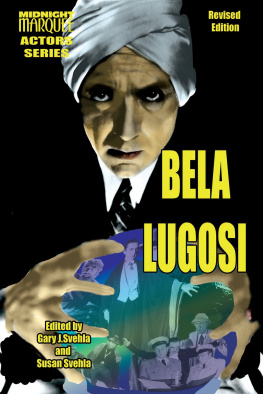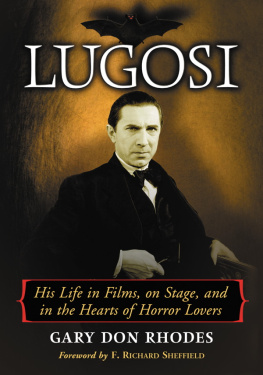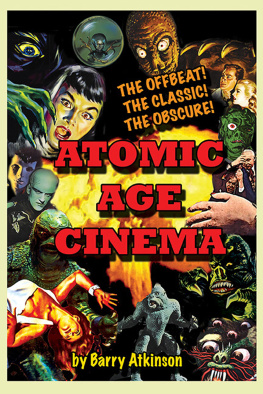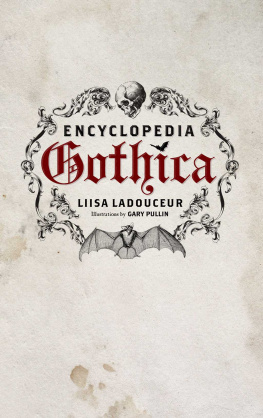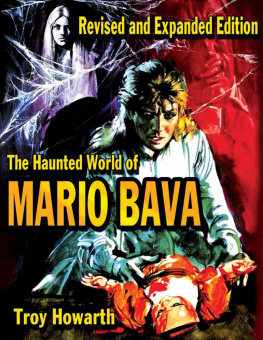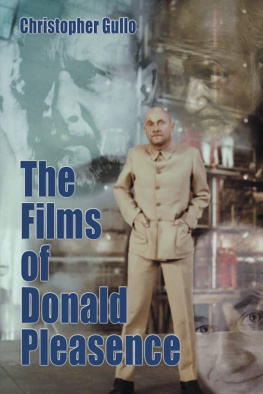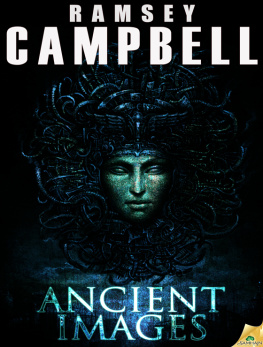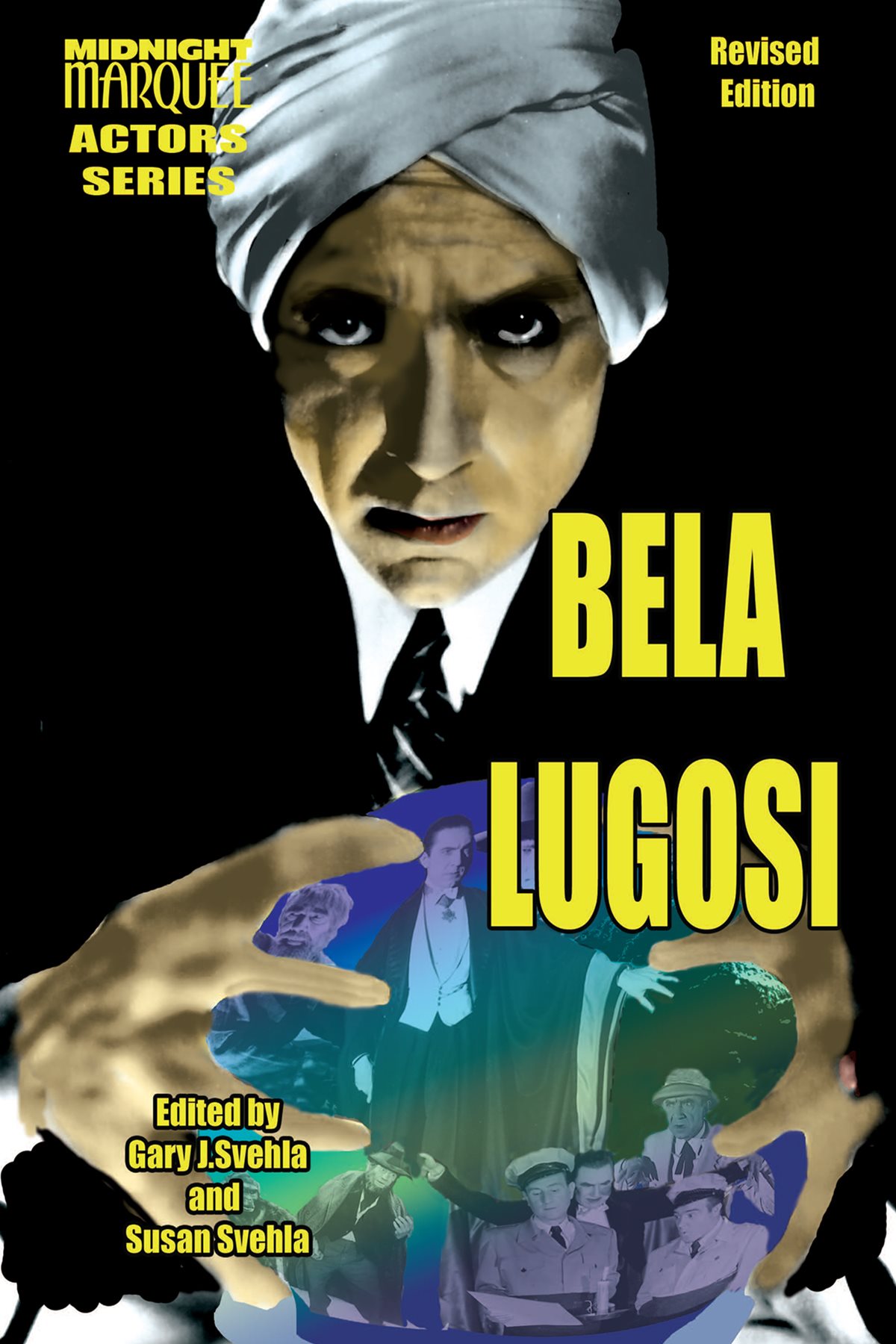2019 Gary J. Svehla and Susan Svehla. All Rights Reserved.
No part of this book may be reproduced in any form or by any means, electronic, mechanical, digital, photocopying or recording, except for the inclusion in a review, without permission in writing from the publisher.
This version of the book may be slightly abridged from the print version.
Editors: Scott A. Nollen and Linda J. Walter
Cover Design by Susan Svehla.
Chandu the Magician (1932) by Dennis Fischer
The Chandu the Magician series began life as a West Coast radio program starring Gayne Whitman in 1931. Fox studio, which later merged with 20th Century to form 20th Century-Fox, bought the rights and selected Edmund Lowe, who had played a magician in the Fox film The Spider (1931), to essay the role of Chandu. The co-director of The Spider and co-director of Chandu the Magician was the legendary William Cameron Menzies, noted for such SF film classics as Things to Come, The Whip Hand and, of course, Invaders From Mars.
Lugosi would later appear as the character Chandu the Magician in Principals 1934 serial, The Return of Chandu, which was shot on sets leftover from King Kong. However, Lugosis charismatic and commanding presence is the only thing to recommend this pedantic serial, and although he makes a fine Chandu (with his long expressive fingers, few actors could match Lugosi in hand gestures suggestive of putting the whammy on somebody), hes even better in the villainous role of the ruthless Roxor in this entry, Chandu the Magician.
The most notable man connected with the production apart from Lugosi was the other director, William Cameron Menzies, a man of myriad talents, most notably in design.
Menzies worked with the idiosyncratic director Roland West, for whom he designed three films, The Bat (1926), later remade by West in 70mm in 1930 as The Bat Whispers, which inspired Bob Kane to create the comic book character The Batman; The Dove (1927), for which Menzies won the first assistant director Academy Award ever, and Alibi (1929), which features Menzies fascinating art deco-cum-Expressionistic set designs obviously inspired by The Cabinet of Dr. Caligari.
Menzies first two films as a director, both co-directed by Kenneth McKenna, were concerned with magicians doing tricks, which showcased Menzies knowledge of special effects techniques. The first, The Spider, features Edmund Lowe performing a series of tricks to unveil a murderer in the audience, and the second, Always Goodbye (not to be confused with the Barbara Stanwyck film with the same title made seven years later), was much the same. Chandus cinematographer was the great James Wong Howe ( Mark of the Vampire; Seconds ), who later worked with Menzies on Kings Row.
Chandu begins inventively with a waving hand seemingly conjuring up the titles, with the name Chandu looking as if it were fashioned out of sparkling sequins. Unlike many early sound films, Chandu has a very fluid look thanks to the many dollies through miniatures that break up the more static shots typical of productions of the period. Miniatures are also used to extend sets and at times were shot and back-projected behind actors to create the impression of immense antiquities on the films frugal budget. Indeed, the film is almost an encyclopedia of early special effects techniques, featuring one inventive effect after another throughout its fast paced running time. The opening sets up that Frank Chandler (Lowe) has learned all the secrets of the Yogi and is now christened Chandu. To demonstrate his powers, Chandu does the famous Indian rope trick, performs an example of astral projection and walks across hot coals, all tricks he will need to use later in the film, Edmund Lowe was considered a dependable leading man who could play both two-fisted heroes and drawing room Romeos in the 1920s and 30s, and while his Chandu lacks the mystery and other-worldly quality that marked Lugosis interpretation, his down-to-earth style makes for a clean-cut hero with a wry sense of humor.
Chandus teacher shows the magician a crystal ball with the image of Roxor (Lugosi) warning of death and destruction rising from the brain of a madman. He is told that Roxor lives in the cliffs above the third cataract of the Nile and that this great danger will threaten him personally through his family.
Chandus sister, Dorothy (Virginia Hammond), is married to scientist Robert Regent (Henry B. Walthall). Regent has invented a secret death ray capable of destroying whole cities, though his motivation for doing so is never explained. He demonstrates the rays destructive power by blasting a large block of stone into nonexistence. Such rays were commonplace staples in the mainstream pulp magazines of the 1920s and 30s, inspired by the discovery of X-rays by Wilhelm Konrad Roentgen in 1895 and perhaps the heat ray of H.G. Wells The War of the Worlds (1898).

